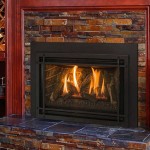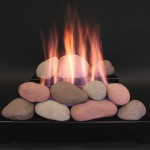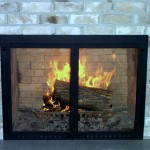How To Clean a Natural Stone Fireplace Hearth
A natural stone fireplace hearth serves as a focal point in many homes, adding warmth and aesthetic appeal. However, the porous nature of many natural stones makes them susceptible to stains, soot, and general grime accumulation. Regular and proper cleaning is essential to maintain the hearth's beauty and integrity, preventing permanent damage and preserving its natural characteristics. This article provides a comprehensive guide on how to effectively clean a natural stone fireplace hearth, detailing the necessary tools, cleaning solutions, and techniques applicable to various stone types.
Before commencing any cleaning process, it is crucial to identify the type of stone comprising the hearth. Common natural stones used for hearths include granite, marble, slate, limestone, and travertine. Each stone possesses unique properties and reacts differently to various cleaning agents. Misidentifying the stone and using an inappropriate cleaner can lead to discoloration, etching, or irreversible damage. Consulting the original installation documents or contacting a stone specialist are recommended if the stone type cannot be definitively identified.
Preparing for Cleaning
Prior to beginning any cleaning activity, adequate preparation is paramount to protecting the surrounding areas and ensuring a safe and effective cleaning process. This involves gathering the necessary tools and materials, as well as taking precautions to prevent further damage to the hearth and surrounding surfaces.
First, assemble the required cleaning supplies. These generally include soft-bristled brushes (avoiding metal or abrasive brushes), sponges, microfiber cloths, a vacuum cleaner with a brush attachment, pH-neutral stone cleaner, clean water, and protective gloves. For stubborn stains, a stone poultice may be necessary (discussed later). Eye protection is also advisable to prevent accidental splashes of cleaning solution.
Next, thoroughly vacuum the hearth to remove loose debris, such as ash, soot, and dust. Pay close attention to crevices and grout lines, as these areas tend to accumulate dirt. The brush attachment on the vacuum cleaner will help loosen and remove stubborn particles. After vacuuming, protect the surrounding floor and walls with drop cloths or plastic sheeting. This will prevent any cleaning solutions from staining or damaging these surfaces.
Finally, ensure adequate ventilation by opening windows or using a fan. This will help dissipate any fumes from the cleaning solutions and create a more comfortable working environment. It is also advisable to spot-test the chosen cleaning solution in an inconspicuous area of the hearth to ensure it does not cause any adverse reactions, such as discoloration or etching. Allow the test area to dry completely before proceeding with the overall cleaning process.
Cleaning Techniques for Different Stone Types
The specific cleaning technique will vary depending on the type of natural stone constituting the fireplace hearth. Using inappropriate cleaners or methods can result in damage to the stone's surface, altering its appearance and potentially weakening its structure.
Granite: Granite is a relatively durable stone that can withstand a wider range of cleaning agents compared to softer stones. However, acidic cleaners should still be avoided, as they can etch the surface. A pH-neutral stone cleaner diluted with warm water is generally effective for routine cleaning. Apply the solution with a sponge or microfiber cloth, gently scrub the surface, and then rinse thoroughly with clean water. Dry the hearth with a clean microfiber cloth to prevent water spots.
Marble: Marble is a porous and delicate stone that is highly susceptible to staining and etching. Acidic cleaners, such as vinegar or lemon juice, should never be used on marble. Use a pH-neutral stone cleaner specifically formulated for marble. Apply the cleaner with a soft sponge or microfiber cloth, avoiding excessive scrubbing. Rinse thoroughly with clean water and dry with a clean microfiber cloth. For stubborn stains, a marble poultice may be required.
Slate: Slate is a relatively durable stone with a distinctive textured surface. A pH-neutral stone cleaner can be used for routine cleaning. Apply the solution with a soft-bristled brush to effectively clean the textured surface. Rinse thoroughly with clean water and allow the slate to air dry. Applying a slate sealant after cleaning can help protect the stone from future staining.
Limestone: Limestone is a porous and soft stone that is susceptible to staining and etching. Acidic cleaners should be avoided. Use a pH-neutral stone cleaner specifically formulated for limestone. Apply the cleaner with a soft sponge or microfiber cloth, avoiding excessive scrubbing. Rinse thoroughly with clean water and dry with a clean microfiber cloth. Regular sealing is crucial to protect limestone from stains.
Travertine: Travertine is a porous stone with distinctive holes and pits. A pH-neutral stone cleaner can be used for routine cleaning. Apply the solution with a soft sponge or microfiber cloth, paying attention to the holes and pits. A soft-bristled brush can be used to gently clean these areas. Rinse thoroughly with clean water and dry with a clean microfiber cloth. Filling the holes and pits with a travertine filler and sealing the stone can help prevent dirt and grime accumulation.
Addressing Stubborn Stains
Despite regular cleaning, stubborn stains may persist on the natural stone hearth. These stains can be caused by various substances, including soot, grease, water, and rust. Addressing these stains requires specific techniques and cleaning agents to effectively remove them without damaging the stone.
Soot Stains: Soot stains are a common issue with fireplace hearths. Begin by gently vacuuming the affected area to remove loose soot particles. Create a paste using baking soda and water. Apply the paste to the soot stain and allow it to sit for several hours or overnight. The baking soda will help absorb the soot. After the paste has dried, gently scrub the area with a soft-bristled brush and rinse thoroughly with clean water. Repeat the process if necessary.
Grease Stains: Grease stains can be removed using a poultice. A poultice is a paste-like mixture that draws out the stain from the stone. A poultice can be made from diatomaceous earth, baking soda, or talcum powder mixed with a solvent such as acetone or mineral spirits. Apply the poultice to the grease stain and cover it with plastic wrap. Allow the poultice to sit for 24-48 hours, allowing it to draw out the stain. Remove the plastic wrap and allow the poultice to dry completely. Once dry, gently scrape off the poultice and rinse the area with clean water.
Water Stains: Water stains, often appearing as rings or discoloration, can be caused by mineral deposits in the water. These stains are typically removed with a pH-neutral stone cleaner and gentle scrubbing. For persistent water stains, a poultice made with baking soda and hydrogen peroxide can be used. Apply the poultice to the stain, cover with plastic wrap, and allow it to sit for several hours. Rinse thoroughly with clean water.
Rust Stains: Rust stains can be difficult to remove from natural stone. Avoid using harsh chemicals or abrasive cleaners, as these can damage the stone. A rust-removing poultice specifically designed for natural stone is the safest and most effective option. Apply the poultice according to the manufacturer's instructions, allowing it to sit for the recommended time before rinsing thoroughly with clean water.
When working with poultices, it is essential to wear gloves and eye protection. Always test the poultice in an inconspicuous area before applying it to the entire stain. Multiple applications may be necessary to completely remove stubborn stains.
Regular cleaning and maintenance are essential to preserving the beauty and longevity of a natural stone fireplace hearth. By understanding the type of stone, using appropriate cleaning techniques, and addressing stains promptly, homeowners can ensure their hearth remains a stunning focal point in their homes for years to come. Employing preventative measures, such as regular sealing, can significantly reduce the risk of staining and damage.

How To Clean A Stone Fireplace Homeowner S Guide Bob Vila

How To Clean A Neglected Stone Fireplace Georgian Cottage

How To Clean A Neglected Stone Fireplace Georgian Cottage

How To Clean A Limestone Fireplace

Stone Fireplace Makeover Part 1 Plans Prep Organized Ish

Stone Fireplace Makeover Part 1 Plans Prep Organized Ish

How To Clean A Stone Fireplace Flemington Granite

How To Clean A Limestone Fireplace Stamford Stone At Home

Stone Fireplace Anyone Know How To Clean This Hometalk

Removing Soot Stains From Bricks And Stone Chimneys Com
Related Posts








